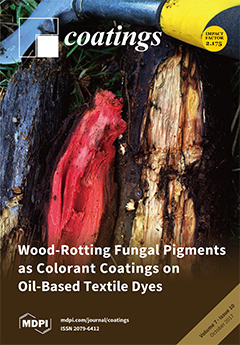High-entropy alloys (HEAs) are emerging as a hot research frontier in the metallic materials field. The study on the effect of alloying elements on the structure and properties of HEAs may contribute to the progress of the research and accelerate the application in actual production. FeCoCrNiAlTi
x (
x = 0, 0.25, 0.5, 0.75, and 1 in at.%, respectively) HEA coatings with different Ti concentrations were produced on Q235 steel via laser cladding. The constituent phases, microstructure, hardness, and wear resistance of the coatings were investigated by XRD, SEM, microhardness tester and friction-wear tester, respectively. The results show that the structure of the coating is a eutectic microstructure of FCC and BCC
1 at
x = 0. The structure of coatings consists of both proeutectic FCC phase and the eutectic structure of BCC
1 and BCC
2. With the continuous addition of Ti, the amount of eutectic structure decreases. The average hardness of the FeCoCrNiAlTi
x HEA coatings at
x = 0, 0.25, 0.5, 0.75, and 1 are 432.73 HV, 548.81 HV, 651.03 HV, 769.20 HV, and 966.29 HV, respectively. The hardness of coatings increases with the addition of Ti, where the maximum hardness is achieved for the HEA at
x = 1. The wear resistance of the HEA coatings is enhanced with the addition of Ti, and the main worn mechanism is abrasive wear.
Full article





